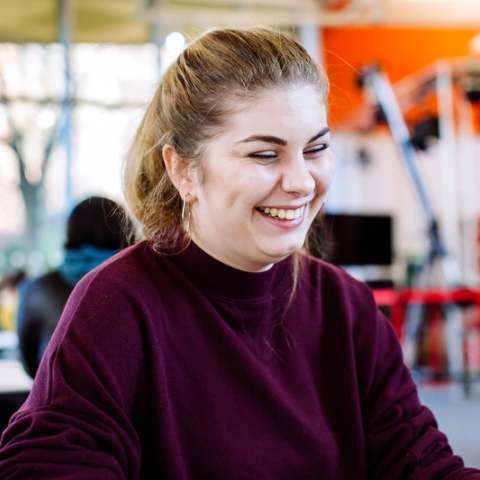
Sidebar navigation
- Academic writing style
- Reports and essays: key differences
- Basic data interpretation
- Basic essay structure
- Better Essays: Signposting
- Better essays: paraphrasing
- Commas and its
- Dissertation Tips
- Essays: task words
- Experimental laboratory reports in engineering
- Commonly confused words and improving vocabulary
- Key features of academic reports
- Paragraphs main body of an assessment
- Reflective writing introduction
- Writing clear sentences
- Writing: flow and coherence

Improving your essays
Explore how to structure your assignments, introduce new topics and take your reader on a journey
Essays can be considered a journey from the introduction to the conclusion. You're the driver, your readers are the passengers, and signposts are the roads you choose to take. The principles discussed here apply to most types of assignment.
Not signposting your essay is a bit like sleeping on a journey and only waking up occasionally – it can be disorientating. You'll wonder where you are and how you got there. Your tutors can feel this way if your content isn't clearly signposted.
The examples below are suggestions and you don't need to reproduce them exactly; each word and phrase has a precise meaning so you should check their meaning before you use them. Most of these terms can be used in any section of an essay, but some will suits particular fields more than others.
What signposting means
Signposting means using words to tell your reader about the content of your essay to help them understand as clearly as possible. Here are three examples of signposts and what they mean:
| Signpost example | Meaning |
|---|---|
| …in order to explain and understand the causes of this offence, it would be useful to apply the criminological theory. | The reader knows that you'll use theory to explore and explain a criminal offence. |
| There are several ways in which the new style shopping centres may be seen as attractive. | The reader knows that you'll include at least two aspects of attractiveness. |
| Another issue which often concerns feminists is the pay gap. | The reader is reminded that you've already covered one issue, and introduces another. |
Types of signposting
You can signposting using single words, short phrases, long phrases, or whole sentences. Examples of each are provided below:
- single words: however, furthermore, initially
- short phrases: in contrast, in conclusion, an additional point is
- sentence: Having discussed the reliability of the research, this report will next address its validity.
Signposting in the introduction, body and conclusion
These lists include some terms you could use for signposting in your introduction, main body and conclusion.
Signposting in the introduction
You could use an opening statement like this to signpost your introduction:
This essay will:
- focus on
- examine
- address
- analyse
It will then:
- ascertain
- establish
- clarify
- show
- describe
- review
- evaluate
- explore
To quantify what your essay will do, you could say: 'This essay will address three aspects'. You could also signpost how this will be done, for example: 'This essay will attempt to determine whether cats are better pets than dogs by analysing studies of their behaviour.'
Signposting in the body
These examples show a word or phrase and what it tells the reader:
- 'This essay will now' — introduces what is next
- 'Furthermore' — takes the point, issue, or data further
- 'In contrast' — includes a strong alternative or challenge
- 'However' — adds an alternative or challenge, but less strongly than the phrase 'In contrast'
Signposting don't always have a statement of intent (like 'It will then', or 'In addition'). You could say: 'Cats are often seen as less affectionate than dogs'.
Signposting in conclusions
You can use many terms and phrases from the introduction and main body of your essay in the conclusion too, but not all of them are appropriate. You shouldn't introduce new material in a conclusion and can use the past perfect tense ('This essay has focused on') or present tense ('This essay shows that').
Download our signposting for better essays revision sheet
Download this page as a PDF for your essay signposting revision notes.
Courses
Find an undergraduate or postgraduate degree course that suits you at Portsmouth.

Guidance and support
Find out about the guidance and support you'll get if you need a helping hand with academic life – or life in general – when you study with us at Portsmouth.




